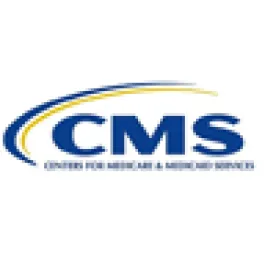Virtual Visits for Established Patients
The Centers for Medicare and Medicaid Services (CMS), for the first time, has proposed payment for virtual visits to established patients regardless of such patients’ location, effective January 1, 2019.
The new service is described in CMS’ Notice of Proposed Rulemaking entitled Revisions to Payment Policies under the Physician Fee Schedule and Other Revisions to Part B for CY 2019, to be published in the Federal Register on July 27, 2018 (the “Proposed Rule”). Pursuant to the Proposed Rule, a physician, or other health care professional qualified to perform an evaluation and management (E/M) service, could bill for a brief (5–10 minute) non-face-to-face check-in with an established patient via communication technology to assess whether the patient’s condition necessitates an office visit.
As proposed, the communication technology–based service would not be separately reimbursable in instances in which the service originates from a related E/M service provided within the previous seven days by the same physician or other qualified health care professional.
Instead, any such virtual follow-up visit would be considered bundled into the previous E/M service.
Similarly, as proposed, in instances where the communication technology–based service leads to an E/M in-person service with the same physician or other qualified health care professional, the service would be considered bundled into the pre- or post-visit time of the associated E/M service and, therefore, would not be separately billable.
Recognizing the need for frequent follow-up visits for patients on Medication Assisted Therapy (MAT) for opioid use disorders, CMS notes that the service could be used as part of such a treatment regimen, as there are several MAT components that could be done virtually, or to assess whether the patient’s condition requires an office visit.
The virtual visit would be reimbursed at a rate lower than existing E/M in-person visits to reflect the lesser work time and intensity, and to account for the resource costs and efficiencies associated with the use of communication technology. CMS also expects that such services would be initiated by the patient, especially since many beneficiaries would be financially liable for co-payments.
Acknowledging that the types of communication technology used to furnish these kinds of services has broadened over time and enhanced the capacity for medical professionals to care for patients, CMS is seeking comment on the types of communication technology that may be used in furnishing the virtual services, including whether audio-only telephone interactions are sufficient compared to interactions that are enhanced with video or other kinds of data transmission.
CMS also is seeking comment on whether verbal consent must be noted in the medical record for each service.
In addition, CMS is seeking comment on whether it would be clinically appropriate to apply a frequency limitation on the use of this code by the same practitioner with the same patient, and on the reasonable frequency limitation. CMS notes its concern with establishing strict timeframes that may create unintended consequences regarding scheduling of care. For example, CMS suggests it does not want to bundle only those services that occur within 24 hours of a visit, lest it see a significant number of visits occurring at 25 hours after the initial service.
Finally, CMS is seeking comment on how clinicians could best document the medical necessity of the virtual service, consistent with documentation requirements necessary to demonstrate the medical necessity of any service under the Physician Fee Schedule (PFS).
Remote Evaluation of Pre-Recorded Patient Information
In the Proposed Rule, CMS also proposes to create a new code to permit separate Medicare payment when a physician uses recorded video and/or images captured by a patient in order to evaluate a patient’s condition, and that evaluation does not result in a subsequent E/M visit. To be billable, the patient would have to provide the physician with pre-recorded, patient-generated still or video images for later review. Currently, CMS permits such reimbursement using such store-and-forward technology only under federal telemedicine demonstration programs conducted in Alaska or Hawaii.
Like the virtual check-in described above, remote evaluation services are not meant to substitute for in-person services currently separately payable under the PFS, but could be used to determine whether an office visit or other service is warranted. When the review of the patient-submitted image and/or video results in an in-person E/M office visit with the same physician or qualified health care professional, the remote service would be considered bundled into that office visit and, therefore, would not be separately billable.
Similarly, when the remote service originates from a related E/M service provided within the previous seven days by the same physician or qualified health care professional, the remote service would be considered bundled into that previous E/M service and also would not be separately billable.
CMS is seeking comment as to whether these services should be limited to established patients or whether there are certain cases, like dermatological or ophthalmological services, where it might be appropriate for a new patient to receive these services. For example, when a patient seeks care for a specific skin condition from a dermatologist with whom she does not have a prior relationship and part of the inquiry is an assessment of whether the patient needs an in-person visit, the patient could share, and the dermatologist could remotely evaluate, pre-recorded information.
This service is distinct from the brief communication technology-based service described above in that it involves the practitioner’s evaluation of a patient-generated still or video image, and the subsequent communication of the resulting response to the patient. The brief communication technology-based service, conversely, describes a service that occurs in real time and does not involve the transmission of any recorded image.
Comments are due by 5:00 p.m. on September 10, 2018. If finalized in current form, the Proposed Rule would mark a drastic shift in Medicare policy toward telemedicine visits, making them much more widely available throughout the country.




 />i
/>i

